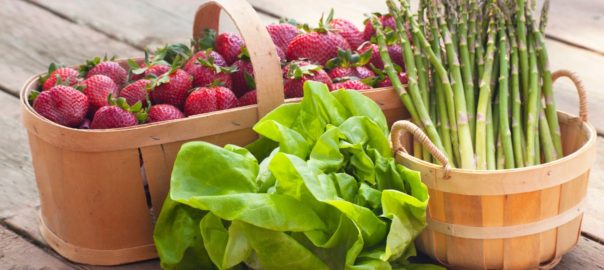As colorful as the May flowers, we can expect the more favorable month to bring in exciting spring produce that is picked at its peak time for the best color and taste!
With the abundance of fruits and vegetables coming our way this season, I can't help but be excited to turn them into memorable spring dishes and desserts for my family.
I hope you enjoy this list of wonderful selection of fresh seasonal produce! Remember that buying organic versions of the vegetables and fruits on the Dirty Dozen list can help you avoid pesticide residues.
Apricots
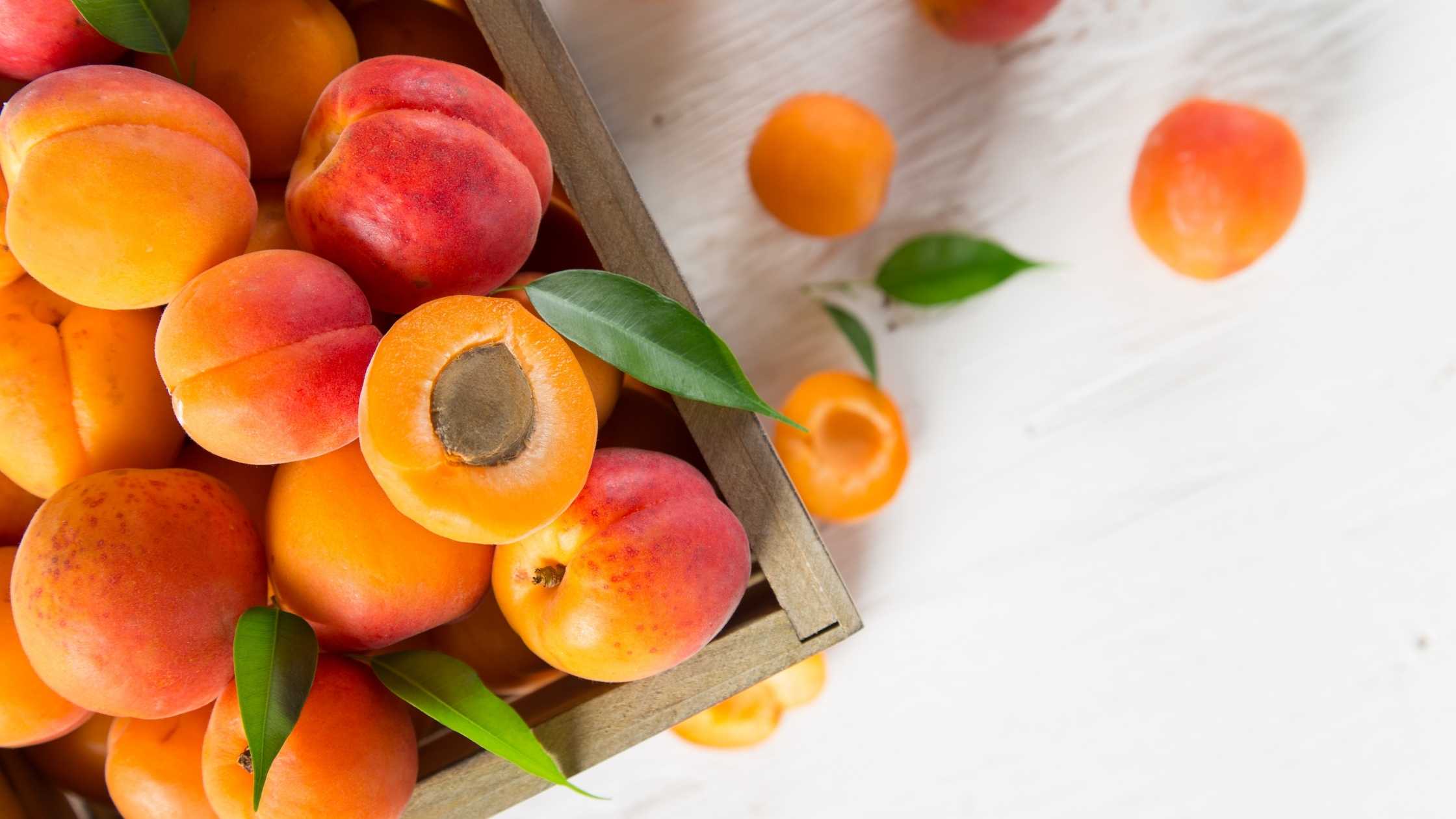
Apricots are grown throughout the warm regions of the world, especially in the Mediterranean.
They are low in calories and fat, a good source of vitamin A and C, and packed with antioxidants, fiber, and vitamins. These multiple benefits can promote eyes, skin, and even gut health. Not to mention that fresh apricots are a hydrating food.
Apricots can be eaten fresh or cooked and can be preserved by canning and drying. Dried apricots are especially high in iron.
Cherries
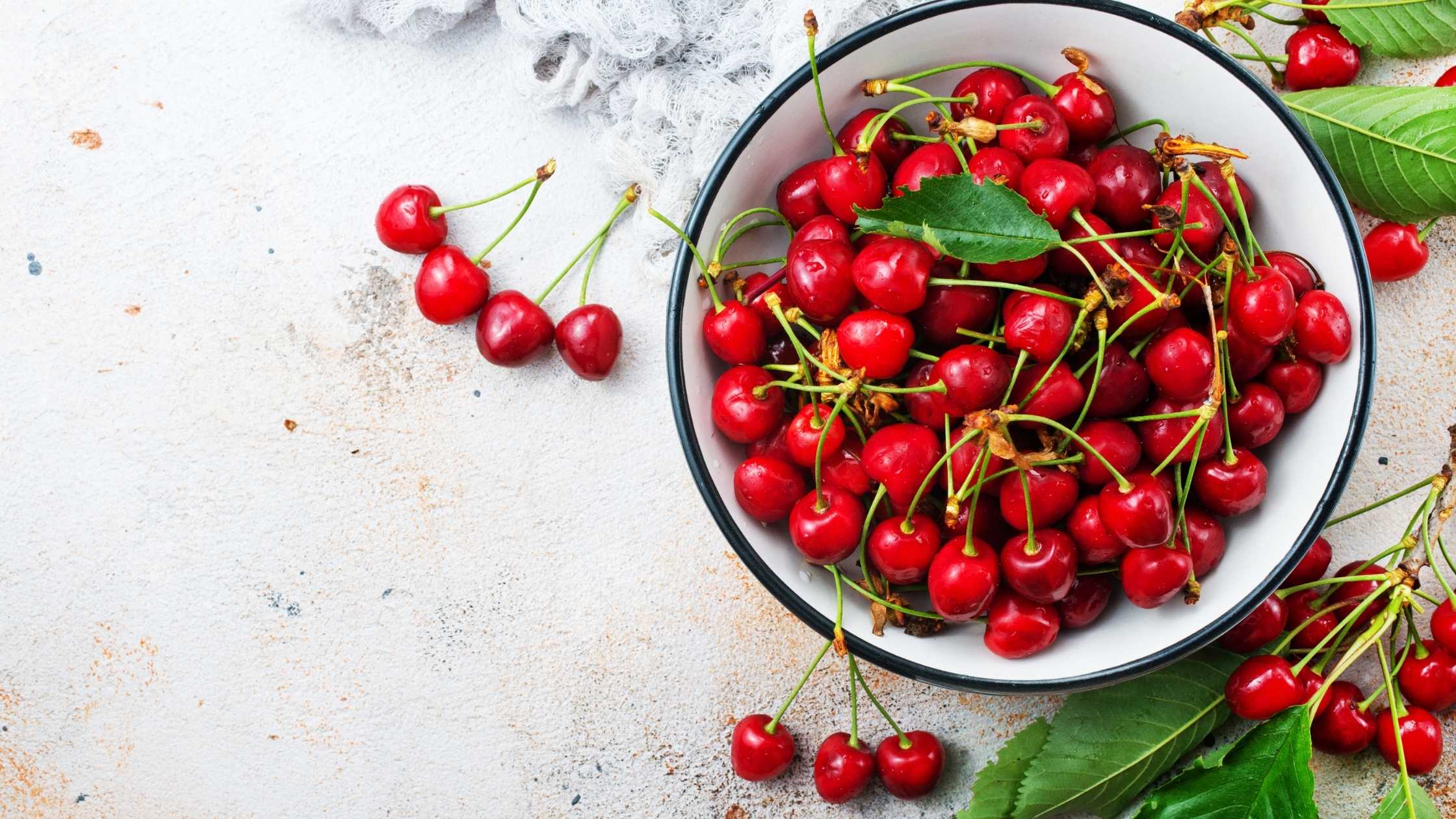
Cherries are eighth on this year’s Dirty Dozen list. I recommend that you choose organic whenever possible to avoid possible risks from pesticides.
These delicious fruits are high in Vitamin C and offer a host of health benefits. It can speed recovery after exercise, improve sleep, and boost heart health.
The sweet and tart varieties can be eaten fresh as a healthy snack; incorporate them in baked goods or add the juice to sparkling water for a hydrating drink for summer!
Mangoes
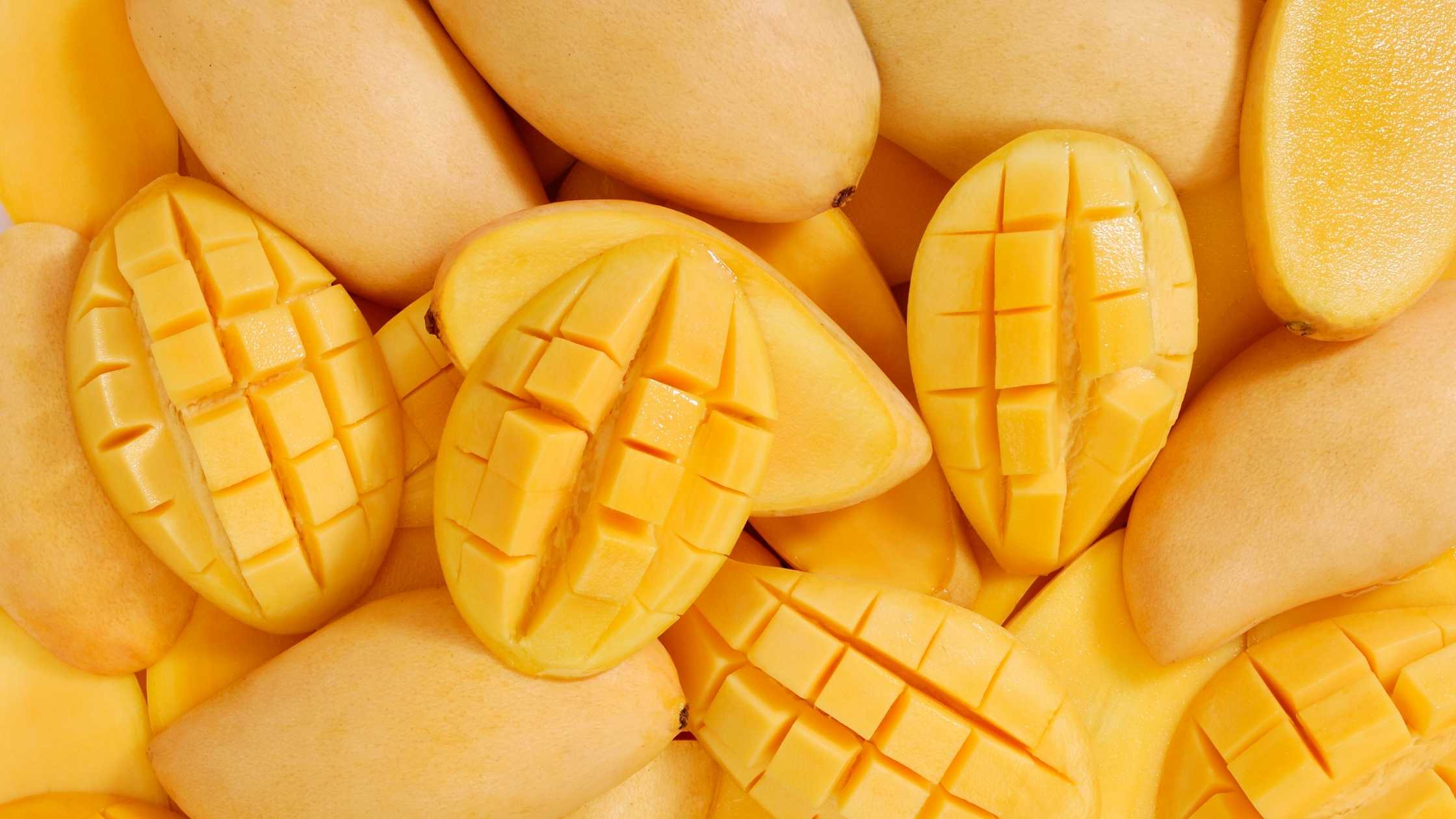
Mangoes are indigenous to southern Asia. They are packed with immune-boosting nutrients -- vitamin A, C, K, and E. Just one cup of mango has 46 mg of vitamin C or 76% of what you should get per day.
It is the best time to go eat them fresh and buy from your local market. Mangoes and salsa are also a delicious combination. This easy-to-make recipe combines both fruits into a refreshingly sweet and tangy
Okra
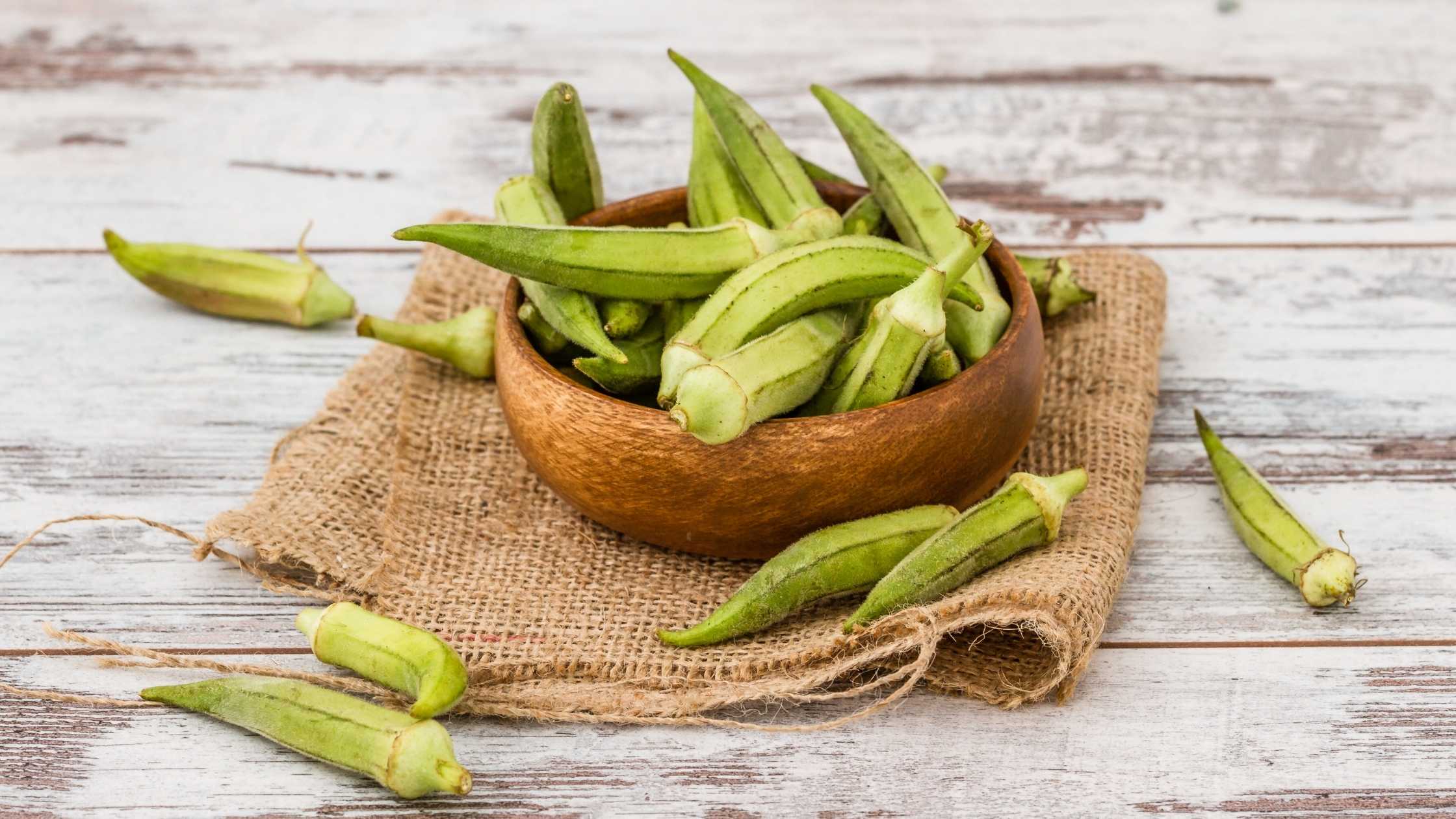
Okra is native to the tropics of the Eastern Hemisphere, such as in Africa and South Asia.
It is high in vitamins C and K1, which boost the immune system and prevent blood clotting. This vegetable is somewhat unique as it also boasts protein and fiber, a nutrient that many fruits and vegetables lack.
Cooking okra is simple. It can be sauteed, pickled, or added to soup and stews.
Strawberries
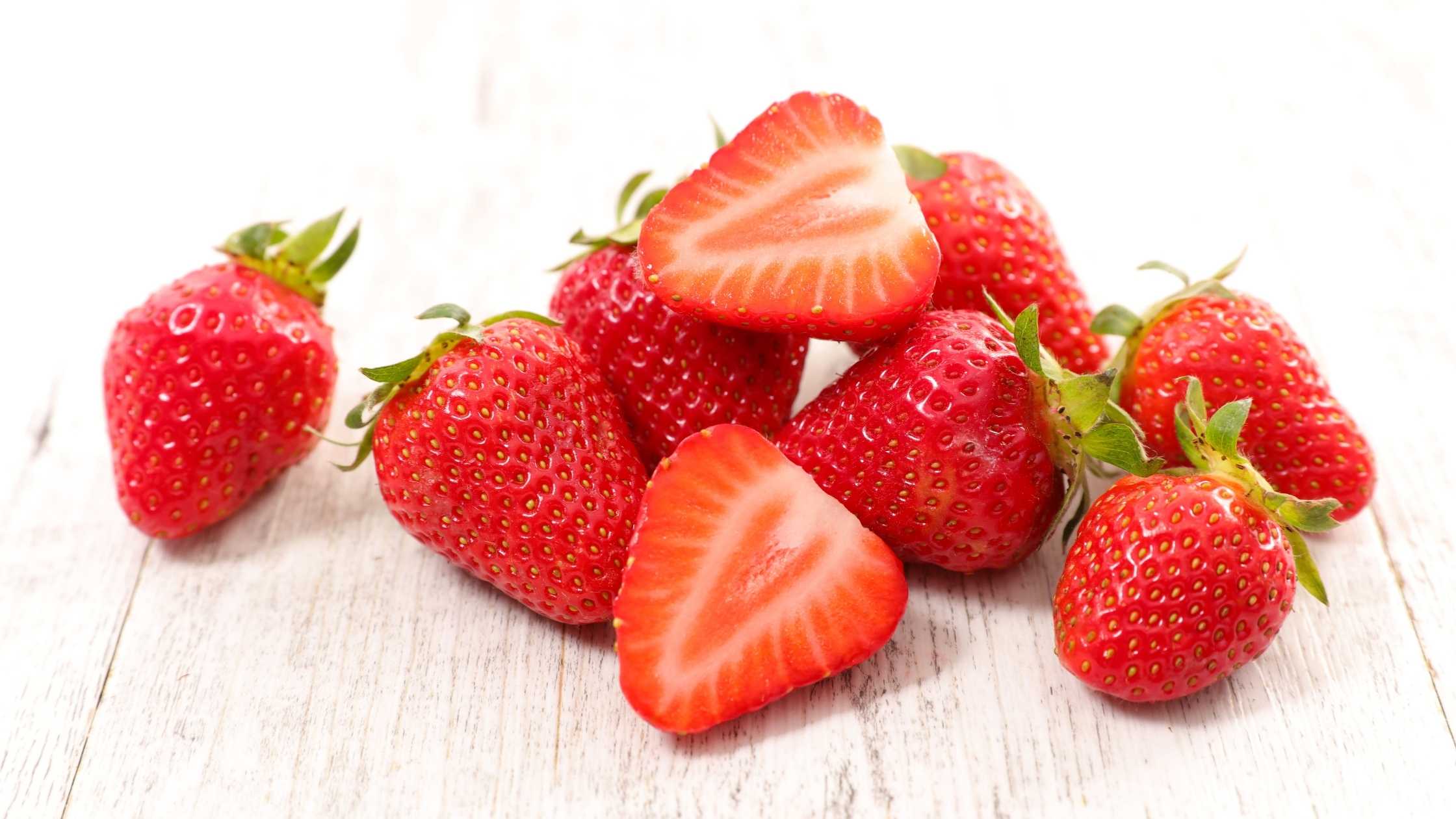
Once again, strawberries top the annual ''Dirty Dozen" list of produce found with the most pesticides. Again, to avoid this, it’s best to buy these organic and wash them thoroughly before eating.
These delicious berries are a good source of vitamin C, manganese, folate (vitamin B9), and potassium. Reduced cholesterol, blood pressure, and inflammation are just a few of its health benefits.
Furthermore, berries could help prevent spikes in blood sugar and insulin levels.
The fruits are commonly eaten fresh, baked, and preserved.
Swiss chard
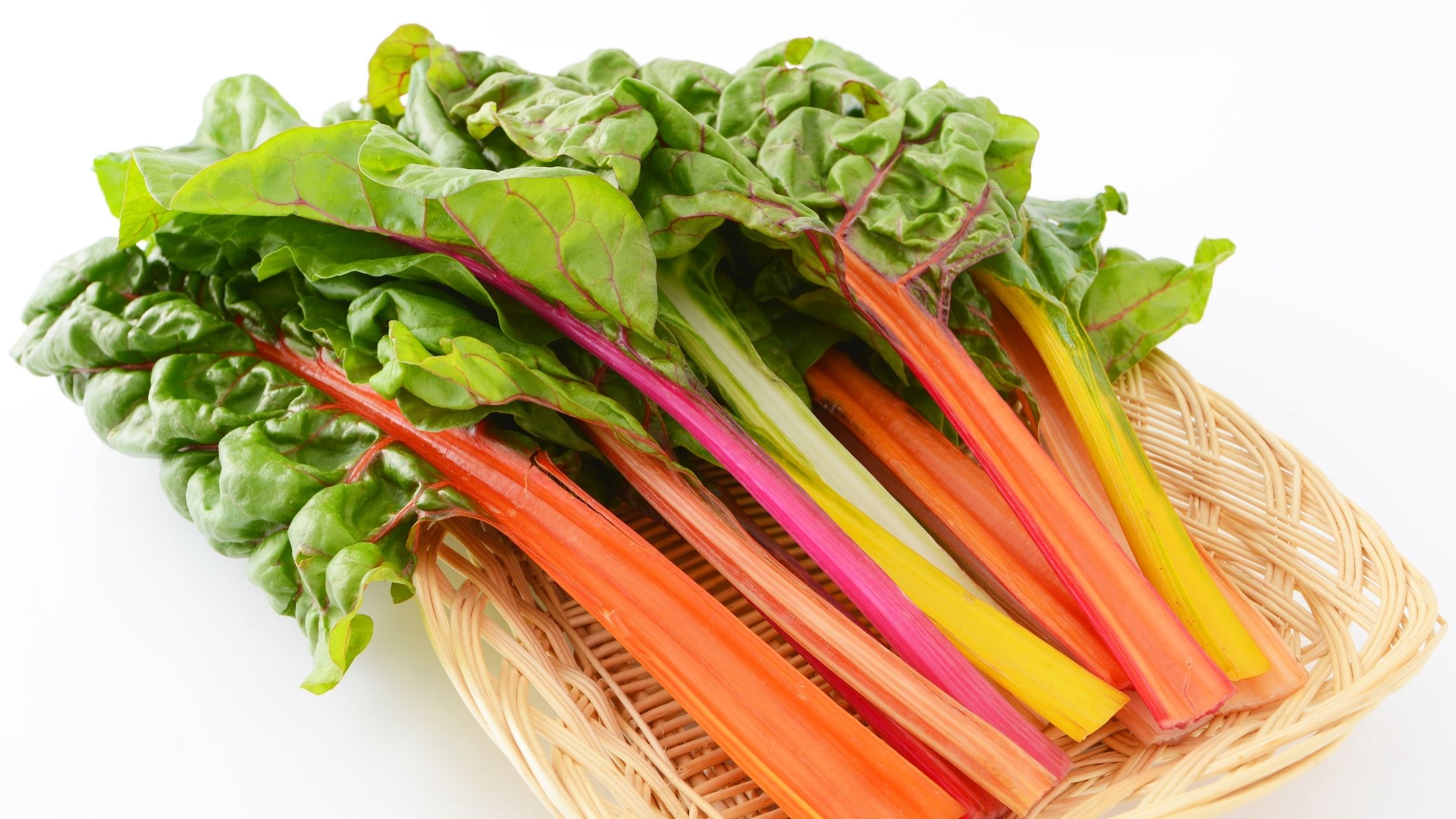
The name may imply that it originated in Switzerland but it is native to the Mediterranean region. Due to its enormous cultivation in Switzerland, it was referred to as a Swiss Chard.
These leafy greens are an excellent source of vitamins A and K and nearly fulfills the daily need for vitamin C. Additionally, it is extremely low in calories, making a weight-loss-friendly vegetable.
Here are two ways to cook Swiss Chard.
Zucchini
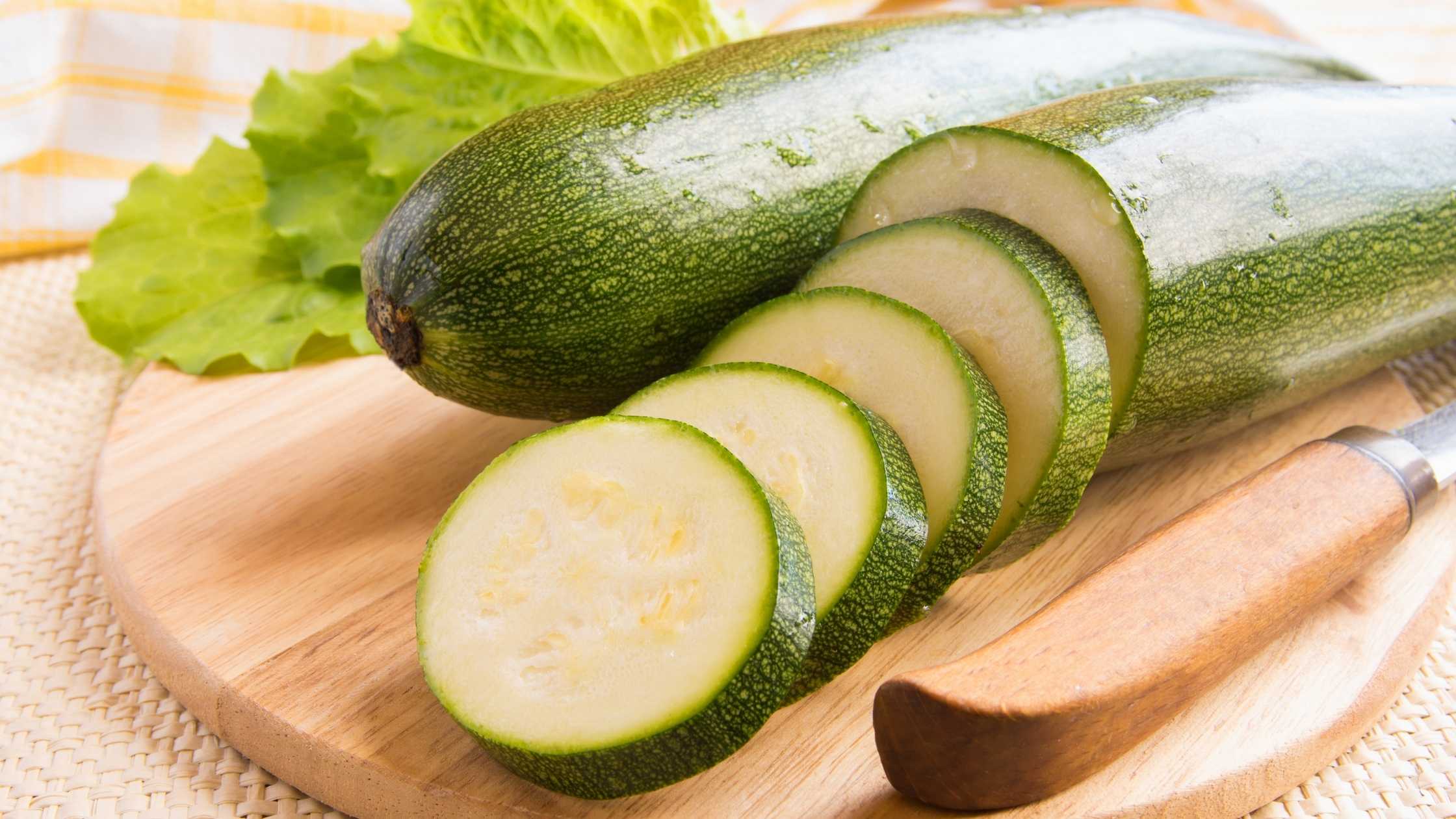
Zucchini is a variety of summer squash. Although it is considered a vegetable, it is classified as a fruit.
It is particularly high in vitamin A and offers several health benefits -- from healthy vision to healthy digestion.
Zucchini is versatile and be eaten raw or cooked in stews, soups, salad, and even as bread!
Artichokes
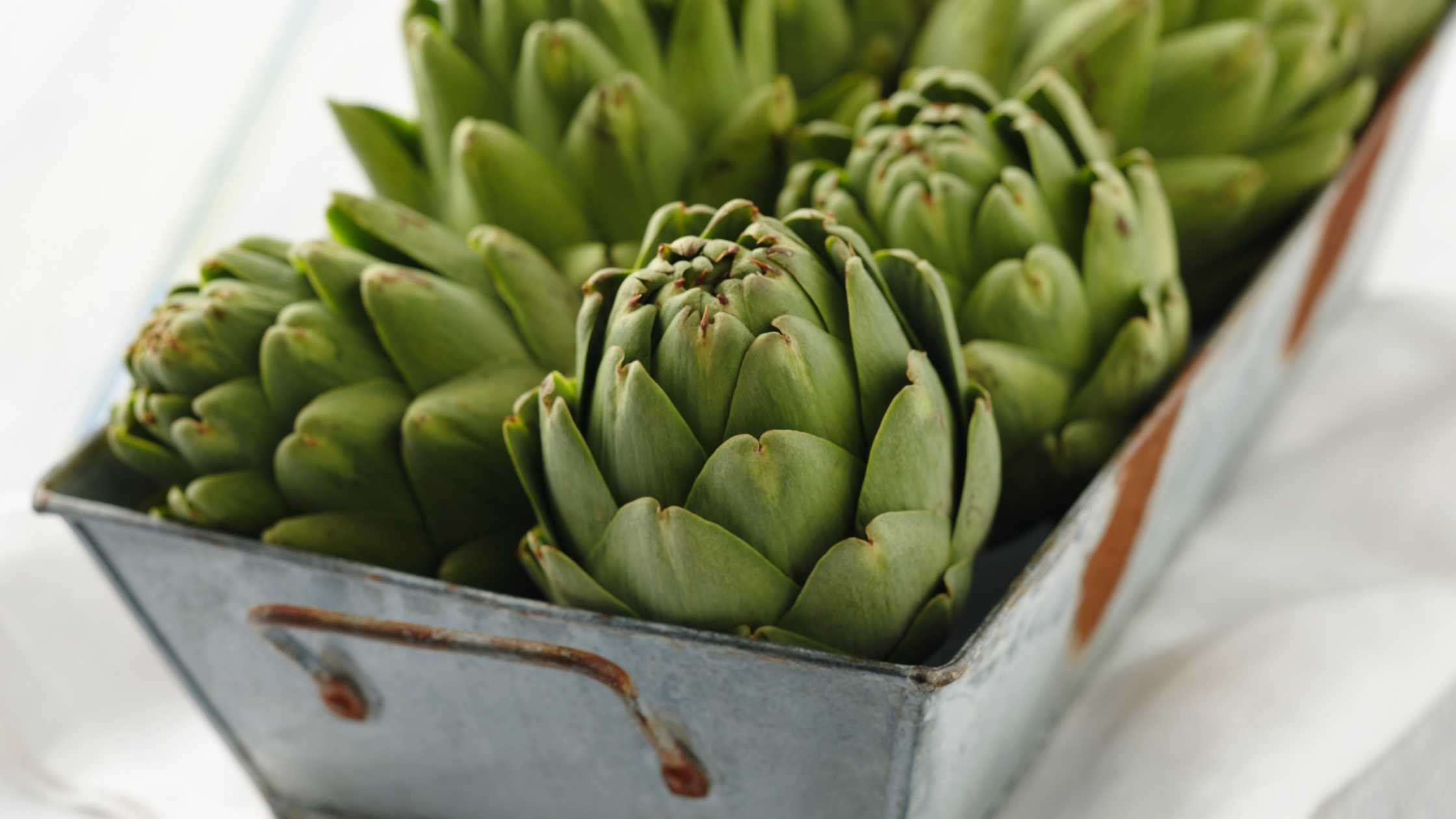
Native to the western and central Mediterranean, artichokes are low in fat, rich in fiber, vitamins, and minerals like vitamin C, vitamin K, folate, phosphorus, and magnesium.
Moreover, artichokes are among the richest sources of antioxidants. These delicious thistles are usually served as a hot vegetable with a sauce or as a cold appetizer.
Asparagus
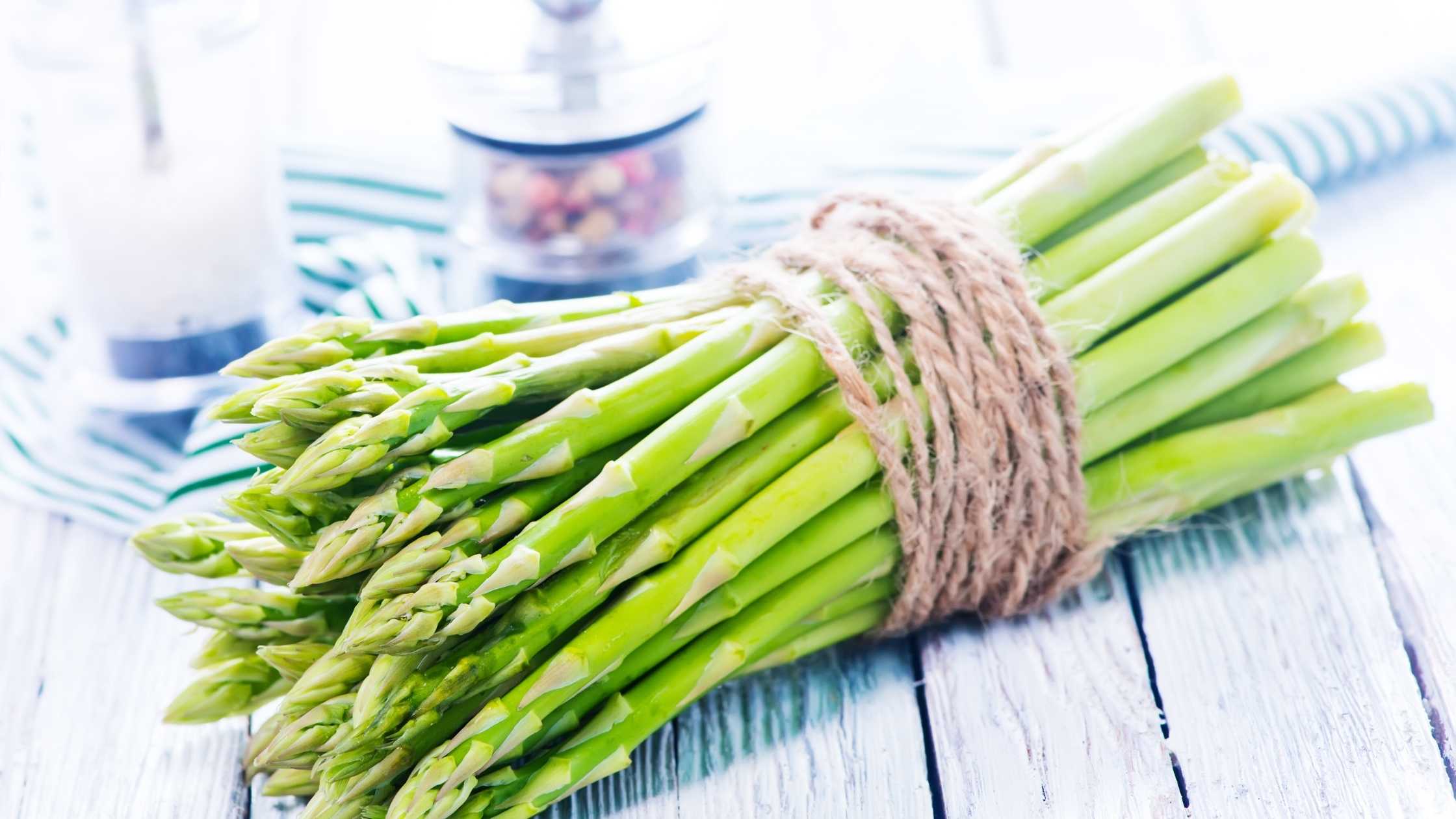
Asparagus is native from Siberia to southern Africa. It is high in vitamin K and folate, essential nutrients that help lower blood pressure and support healthy pregnancy.
Asparagus is low in calories, high in fiber, and contains 94% water, making it ideal for your digestive health. You can easily incorporate it into your diet; you can add it to salads, omelets, and it also makes a great side dish!
Here are some ways to prepare and cook asparagus.
Lettuce
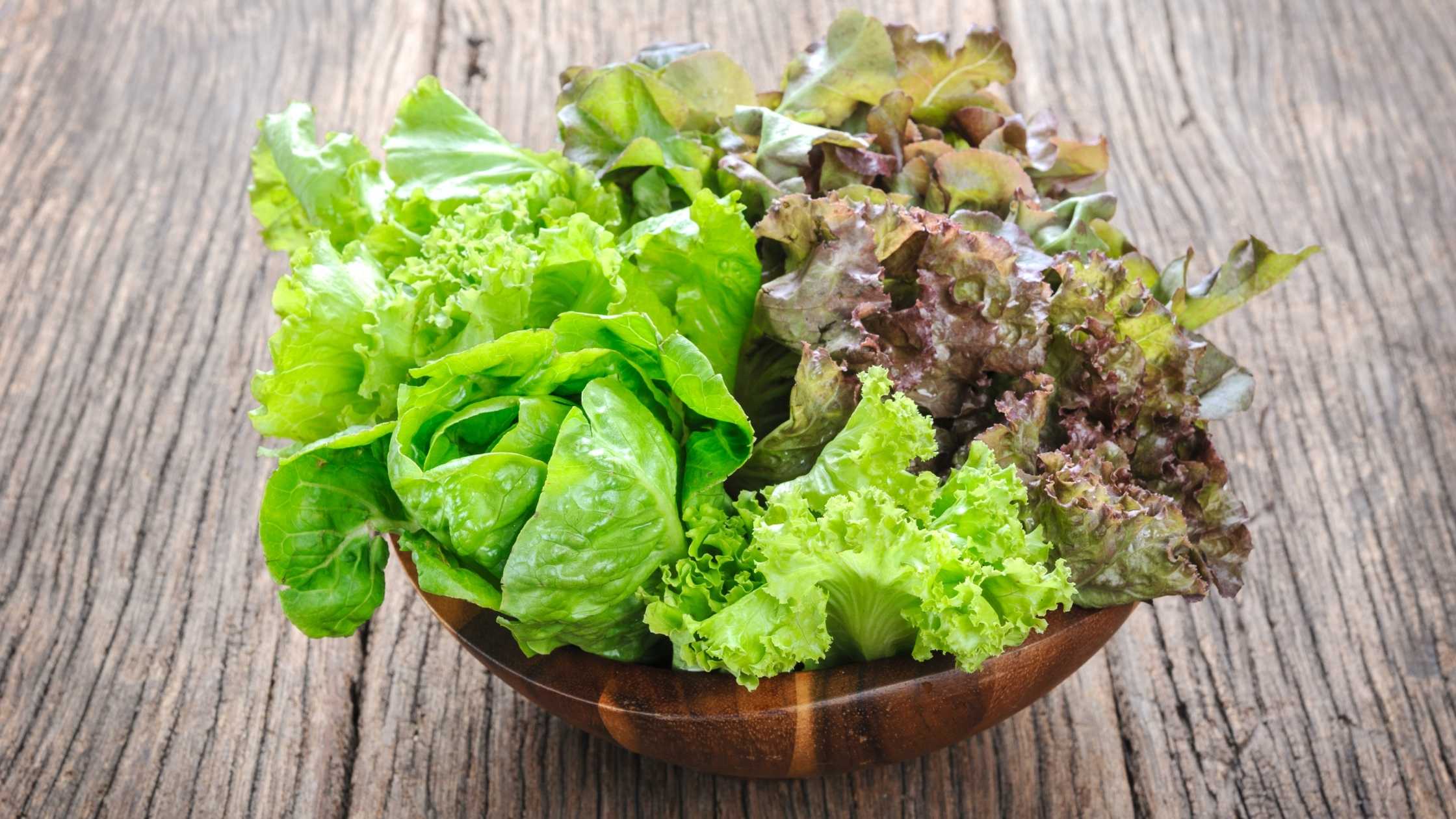
Lettuce is a nutritious vegetable in the aster family. Although it comes in many varieties, this leafy veggie, in general, is rich in vitamins K and A. Note that red leaf lettuce is higher in antioxidants.
Most lettuce varieties, such as iceberg and romaine, are eaten fresh and often served in salads, wraps, and sandwiches.
Pineapples

Pineapples are delicious tropical fruits native to the Caribbean islands and Central and South America.
They are low in calories and loaded with antioxidants and compounds that can reduce the risk of chronic diseases, improve digestion, lower the risk of cancer, boost immunity, ease arthritis symptoms, and speed up recovery after surgery or vigorous exercise.
Serving one cup of fresh pineapples along with your usual breakfast or blending frozen pineapples into smoothies is a refreshing way to start your day!
Radish

Radish varieties are an excellent source of fiber, vitamin C, and antioxidants. Compared to other root vegetables, they have fewer carbs and calories.
Strong immune system, better digestion, and increased bile production are just a few of the many radishes' health benefits. Note that radishes are generally safe to eat, but people with thyroid problems must consume them in moderation.
Using Daikon radish root to substitute for ramen noodles is my personal favorite!
Rhubarb

Rhubarb is classified as a fruit by the USDA. It is a good source of antioxidants, vitamin K, and fiber. Note that rhubarb may be high in oxalate and best to avoid if you are prone to kidney stones.
Due to its sour and slightly sweet taste, its fleshy, tart leafstalks are usually sugared for use in pies, jams, and crumbles.
Spring Peas

Green peas are not a vegetable. They are part of the legume family, consisting of plants that produce pods with seeds inside. Other examples of legumes are lentils, chickpeas, and beans.
What makes peas unique is their high protein content. Half a cup of peas contains 4 grams of protein.
Note that raw peas contain higher antinutrients that may disrupt the absorption of some nutrients. So it’s best to eat them fully cooked, fermented, or soaked.
Sources https://www.britannica.com/plant/apricot https://www.britannica.com/plant/cherry https://www.britannica.com/plant/mango-plant-and-fruit https://www.britannica.com/plant/okra https://www.britannica.com/plant/strawberry https://www.britannica.com/plant/chard-plant https://www.britannica.com/plant/zucchini https://www.britannica.com/plant/artichoke https://www.britannica.com/plant/Asparagus https://www.britannica.com/plant/lettuce https://www.britannica.com/plant/pea https://www.healthline.com/nutrition/rhubarb https://www.healthline.com/nutrition/benefits-of-pineappleb
 When eating fresh, in-season produce, don’t forget to wash it first. Click here to get your toxin-free fruit and veggie wash!
When eating fresh, in-season produce, don’t forget to wash it first. Click here to get your toxin-free fruit and veggie wash!

